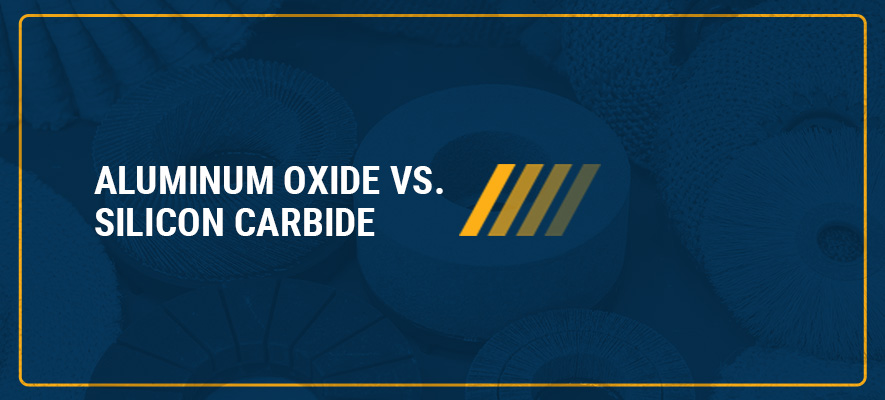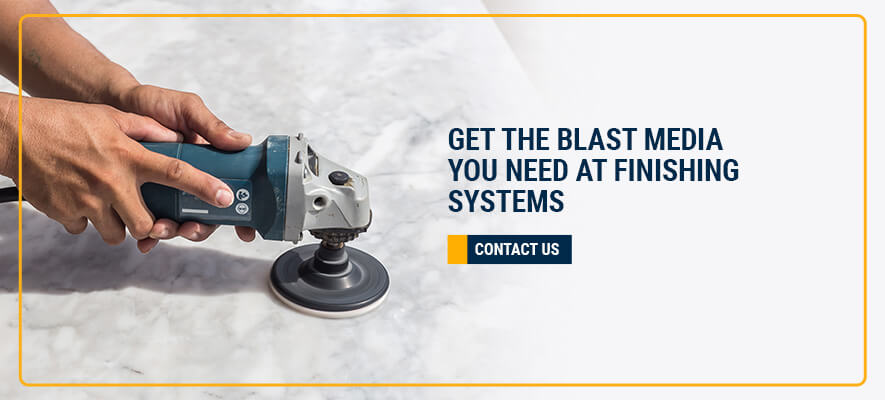Aluminum Oxide vs. Silicon Carbide

Aluminum Oxide vs. Silicon Carbide
Updated: November 24, 2023In industrial and finishing processes, blasting media plays a crucial role in stripping, cleaning, and polishing surfaces to achieve a professional finish. Two of the most commonly used abrasives are aluminum oxide and silicon carbide. While both are cost-effective and versatile, their unique properties make them more suitable for certain applications than others.
Aluminum Oxide Abrasives
Aluminum oxide is one of the most widely used blasting materials, especially for painted surfaces, wood, and various metals. It’s known for its affordability, durability, and long-lasting performance, making it a favorite in many industries. The abrasive comes in three main colors — pink, white, and brown — each with specific uses and benefits.
Pink and White
White and pink aluminum oxide are ideal for achieving smoother finishes compared to the brown variety. White is particularly effective on wood and lacquered surfaces due to its low heat generation and precision. Pink is often used on softer woods or for sharpening and grinding tasks. However, these two varieties are less durable than brown aluminum oxide.
Brown
Brown aluminum oxide excels when working with harder materials. It offers excellent wear resistance and self-sharpening properties as the grains break down during use. This makes it highly efficient for removing larger metal burrs and leaving behind finer particles for a smooth finish. Brown aluminum oxide is also highly recyclable, which reduces long-term costs and makes it the most economical choice for many operations.
Silicon Carbide Abrasives
Silicon carbide is a hard and sharp abrasive that’s well-suited for delicate materials such as ceramics, glass, stone, marble, fiberglass, and certain plastics. Its fine, pointed edges allow for multiple uses without significant degradation, making it ideal for short blast cycles on softer surfaces.
One of the key advantages of silicon carbide is its versatility. It can be used in both direct-pressure and suction-based blasting systems. It’s also compatible with aluminum oxide in finishing processes — where aluminum oxide removes general residue and silicon carbide refines the surface. This combination helps extend the life of the more fragile silicon carbide grains while still achieving a high-quality finish.
Silicon carbide is safe for use in wet or volatile environments. It doesn’t produce static electricity or significant magnetism, making it a safer option in sensitive settings. Additionally, it’s available in friable and non-friable forms, allowing for better control over wear and performance.
Which is Better for Grinding Steel: Aluminum Oxide or Silicon Carbide?
When it comes to grinding steel, aluminum oxide is typically the preferred choice. Although silicon carbide is harder and sharper, it's also more brittle. This brittleness leads to rapid wear on a tough material like steel, making it less effective for heavy-duty grinding. In contrast, aluminum oxide — especially the brown variety — is highly durable and provides a balanced finish on steel surfaces.
For optimal results, you might start with brown aluminum oxide to remove large imperfections and then use pink aluminum oxide for a finer finish. This approach ensures efficiency and quality in the final product.
Which is Better for Grinding Aluminum: Aluminum Oxide or Silicon Carbide?
Aluminum is a softer metal, so it requires a balance between hardness and heat control. Silicon carbide is often recommended for aluminum because it generates less heat and works well on low-tensile strength materials. However, using a mix of aluminum oxide and silicon carbide can offer the best of both worlds.
Starting with aluminum oxide helps remove larger debris, while silicon carbide refines the surface for a smooth, even finish. White aluminum oxide is an excellent choice for aluminum surfaces due to its precision and minimal heat output.
How to Choose Between Aluminum Oxide and Silicon Carbide
The decision between aluminum oxide and silicon carbide depends largely on the material you're working with. For high-tensile strength materials like steel, bronze, or aluminum alloys, aluminum oxide is generally the better option. On the other hand, for non-metallic or softer materials, silicon carbide may provide superior results.
Using a combination of both abrasives is often the best strategy for precision work. This method not only improves efficiency but also extends the life of your materials. Whether you're working on metal or wood, blending the two can lead to better outcomes and greater flexibility in your process.

Get the Blast Media You Need at Finishing Systems
At Finishing Systems, we understand the importance of selecting the right abrasive for your specific needs. Our range includes high-quality aluminum oxide and silicon carbide, available in friable, semi-friable, and standard types to suit a wide array of applications. Whether you're working on metal, wood, or delicate surfaces, we have the right solution for you.
Our team of experts is here to help you choose the best blasting media for your project. Contact us today to learn more about our products and how they can enhance your finishing process.
Electric Steering Pump,Electric Power Steering Pump,Electronic Power Steering System,Electric Hydraulic Power Steering Pump
Fuxin Dare Automotive Parts Co., Ltd. (DARE AUTO) , http://www.darepump.com